Celebrating the Eternal Legacy of Artist Yayoi Kusama
An upcoming Hirshhorn collection exhibition will honor the artist’s seven-decade career
/https://tf-cmsv2-smithsonianmag-media.s3.amazonaws.com/filer/c8/1f/c81f8dbc-0cdf-4e14-a18c-580559b649c5/030.jpg)
At first glance, the work of Japanese artist Yayoi Kusama is visually dazzling. Her constructed boxed rooms with millions of reflections from strategically placed mirrors astonish all those who enter into them. Her brightly colored pumpkin sculptures loom larger-than-life in exhibitions and on Instagram feeds across the world. Packed with countless miniscule polka dots, her paintings create a sense of endlessness that challenges the borders of her canvas.
As if walking into a hallucination, it’s difficult to make sense of the repetitive motifs and endless spaces that feel so different from daily life. Self-described as the “modern Alice in Wonderland,” Kusama enthralls with these infinite visions; she generously welcomes museumgoers into a visualization of the world as she sees it.
Now 90 years old, Kusama was an active participant in the art world of the 1960s when she arrived in New York City from Kyoto in 1958. Growing up in an abusive household, Kusama, at the age of 10, began experiencing hallucinations. Dots, pumpkins and flashes of light occupied her vision. She later began to recreate these motifs through her art as a form of therapy.
Mental health issues prompted her to return to Tokyo and in 1977, she voluntarily checked herself into a mental institution. Today Kusama still lives in the institution, which is just down the street from her art studio. She travels back and forth between both locations and continues to create her signature pieces.
The idea that everything in our world is obliterated and comprised of infinite dots, from the human cell to the stars that make up the cosmic universe, is the theme of her art. As Kusama describes herself, “with just one polka dot, nothing can be achieved. In the universe, there is the sun, the moon, the earth, and hundreds of millions of stars. All of us live in the unfathomable mystery and infinitude of the universe.”
Attendees of the Hirshhorn’s immensely popular 2017 survey, “Yayoi Kusama: Infinity Mirrors” exhibiting six of Kusama’s Infinity Rooms, were able to experience this phenomenon for themselves.
It was a highly-anticipated moment in Kusama’s journey as an artist, and visitors responded, queuing up and waiting for hours to enter the museum to experience the otherworldly realms for themselves. The museum reports that nearly 160,000 people experienced the show, bumping its annual visitor record to 475,000.
Kusama channels recent cultural trends and technological advancements through her Infinity Rooms. This has allowed her to become one of the most famous artists of her generation and has kept her art relevant for decades. The spark in popularity of photography in the social media age aligns well with the self-reflection element of the Infinity Rooms.
“The self-envisioning that we see happening through social media today and through other forms of photography,” explains Betsy Johnson, a curator at the Hirshhorn, “is something that was a part of Kusama's practice the whole way through, but it just so happens that today that has become something that is at the forefront of our collective consciousness. It’s just the perfect fusion of cultural currents with something that was always a part of her practice.”
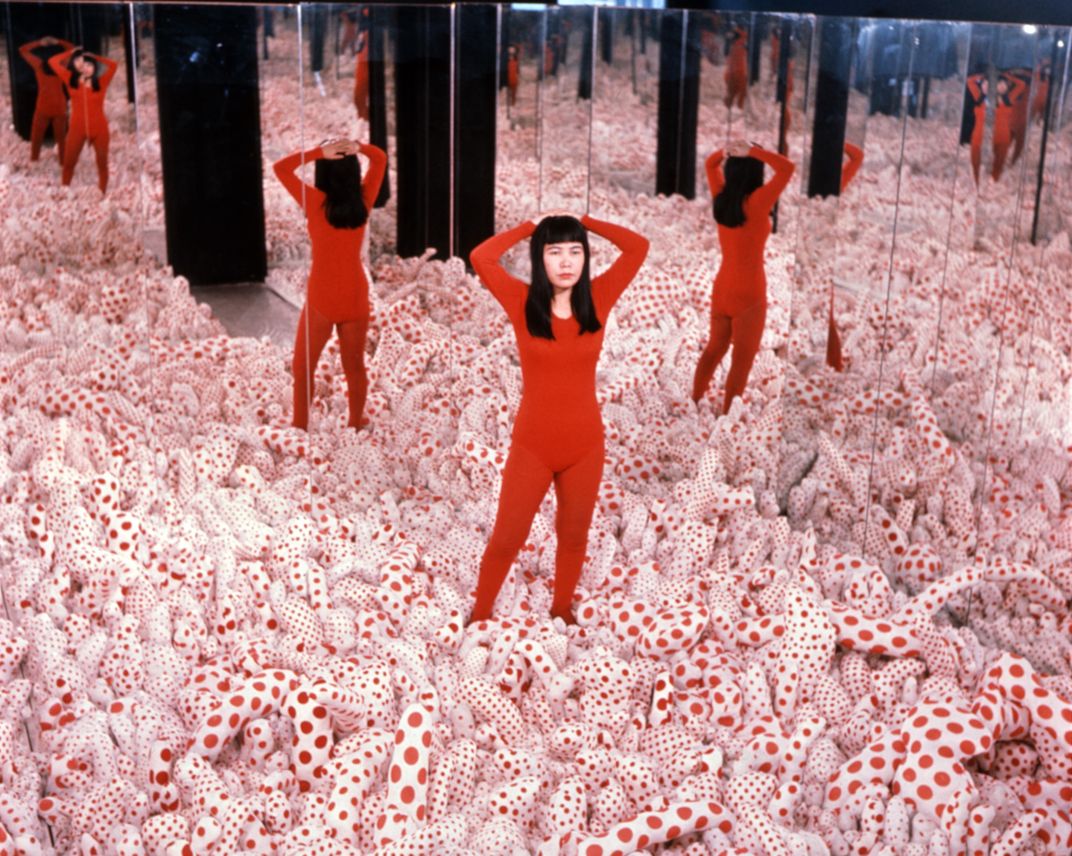
Now, the Hirshhorn announces yet another Kusama exhibition, “One with Eternity: Kusama in the Hirshhorn Collection,” which opens in April. The show promises a tribute to the artist, rooting her otherworldly art within her life experiences. Kusama’s art is tied to overarching events she was experiencing at the time of their creation.
“She's become bigger than life, people look at artists and they think they're just special or different,” explains Johnson, who is organizing the upcoming exhibition. “One of the really wonderful things about working your way through a person's biography is understanding all of the little steps along the way that created what we see today.”
The objects on display will draw from different parts of her career, helping humanize the artist and deepen viewers’ appreciation of her work. While pumpkins, patterns and polka dots have been Kusama’s signature motifs, the artist has also experimented with other art forms that were influenced by her childhood. Among the five objects on display in this collection are some of her earliest paintings and photographs, as well as her 2016 signature sculpture titled Pumpkin and now held in the museum’s collections.
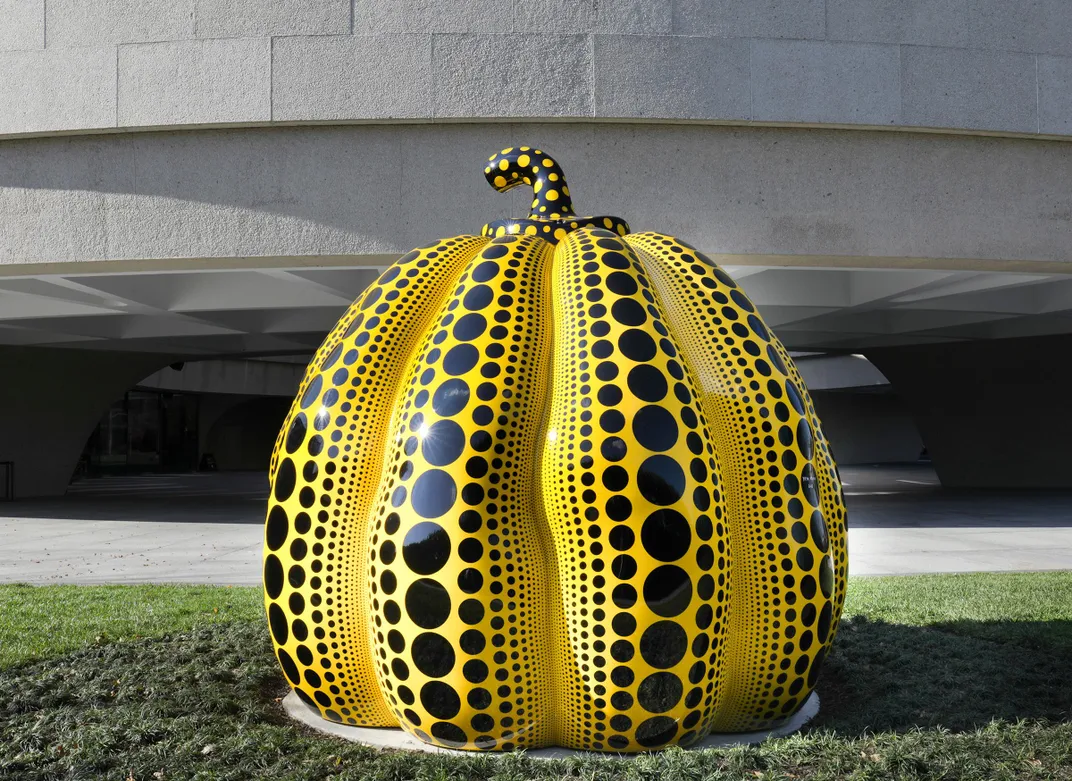
One piece from the collection, the 1964 Flowers—Overcoat is a gold coat covered with flowers. The sculpture reveals details of Kusama’s early life. “She wasn't always just focused on polka dots; she has this history where her family had acreage and grew plants,” Johnson says of the origin of Kusama’s interest in fashion. “This experience with organic forms is very much a part of her early practice and continues throughout her career.”
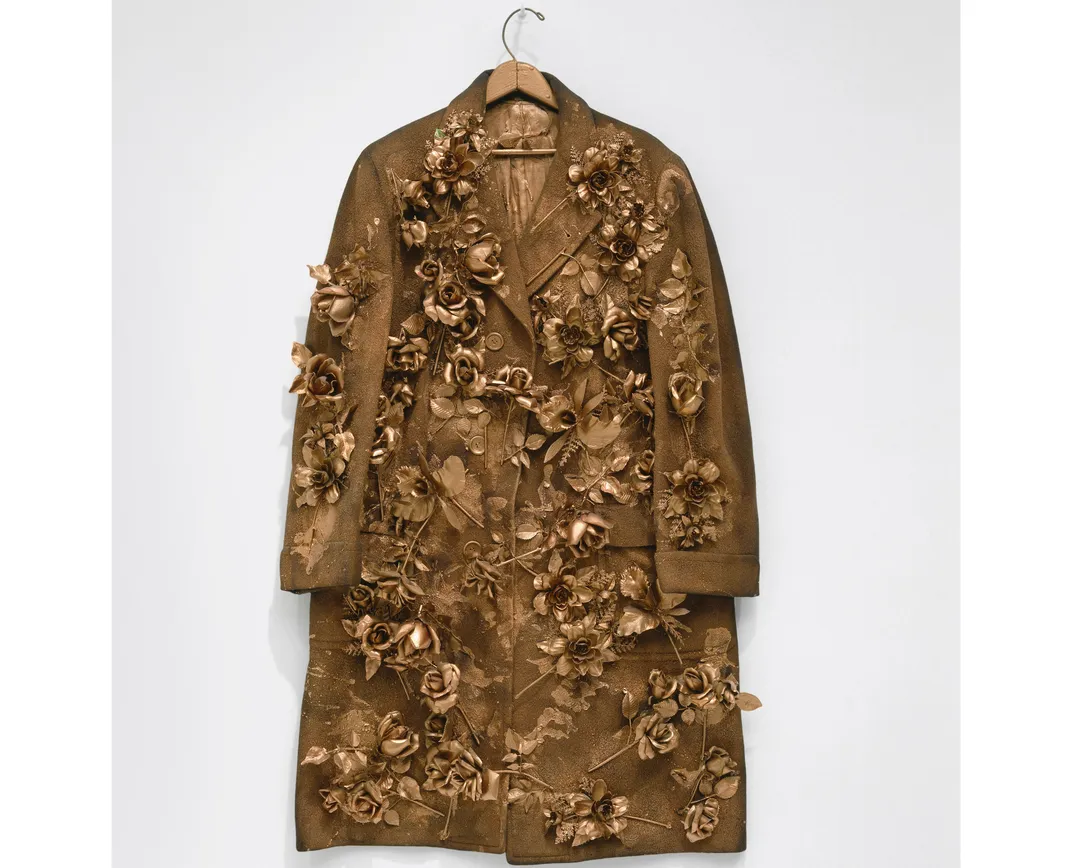
The exhibition will introduce the museum’s most recent acquisitions—two Infinity Mirror Rooms. A breakthrough moment in Kusama’s career was when she began constructing these experiential displays in 1965. No bigger than the size of small sheds, the interior of these rooms is lined with mirrored panels that create the illusion of endless repetition. Each room carries a distinct theme, with objects, sculptures, lights or even water reflected onto its mirrored walls.
The artist has constructed about 20 of these rooms, and has continued to release renditions up to this day. The evolution of these rooms demonstrates how her understanding of the immersive environment has shifted throughout the decades. On display at the upcoming exhibition will be Kusama’s first installation, Infinity Mirror Room—Phalli’s Field (Floor Show) (1965/2017) as well as one of her most recent rooms. The title and theme of the new room, newly acquired by the museum, is yet to be announced.
Johnson won’t say much about the museum’s newest Infinity Room acquisition but she did hint that in true Kusama fashion, the room feels otherworldly, seeming to exist outside of space and time.
The Discovery of the Lost Kusama Watercolors
Even at the beginning of her career, Kusama’s desire to understand her hallucinations and mediate her interaction with the world was expressed through her practice. Before transforming her visions into unique renditions of eternal repetition and perceptual experiences, Kusama expressed them through early paintings and works on paper.
The visual elements that Kusama audiences admire took Smithsonian archivist Anna Rimel quite by surprise late last year, when she was going through archived materials at the Joseph Cornell Study Center at the Smithsonian American Art Museum.
Rimel was conducting a preliminary survey of the Joseph Cornell papers when she found the paintings. Gathered in a worn manila envelope with Cornell’s writing on the outside were four previously undiscovered Kusama watercolors. The paintings were stored with their original receipts and given titles and signed by Kusama herself, making them an exciting discovery for Rimel and the museum staff.
“They're very ethereal looking. The images themselves seem to be emerging out of a murky background, they give off a very oceanic kind of quality,” says Rimel. “They're really visceral, you can't help but react to them when you see them.”
These watercolor works date back to the mid-50s, bordering Kusama’s transition from Japan and into the United States. They were purchased by artist Joseph Cornell, a friend and supporter of Kusama’s art.
Although different from the vibrant nature of her more recent pieces, these watercolor paintings share the cosmological nature Kusama would later expand on with the Infinity Rooms and other pieces. The watercolor paintings have been transferred to the collections of the Smithsonian American Art Museum.
As this recent discovery indicates, Kusama’s career is continuing to surprise art enthusiasts by offering up new gifts to admire. A tribute to her legacy, the upcoming Hirshhorn exhibition will celebrate the artist whose work has now become a part of the Institution's history.
“The Kusama show was huge for us in so many ways and really helped draw a larger audience, and we really recognize that,” Johnson says. “As a result of that, we really want to continue her legacy in D.C., and in our museum,”
In 1968, in an open letter to then-president Richard Nixon, Kusama wrote, “let’s forget ourselves, dearest Richard, and become one with the absolute, all together in the alltogether.” Loosely derived from these words, Johnson named the exhibition, “One with Eternity” in reference to the museum's effort to ensure that the artist’s legacy, like her art, becomes eternal.
“That's what museums are in the practice of doing—making sure that an artist's legacy lasts for as long as it possibly can,” explains Johnson. “It’s about making sure that this legacy that she has created is sustained into the future.”
Currently, to support the effort to contain the spread of COVID-19, all Smithsonian museums in Washington, D.C. and in New York City, as well as the National Zoo, are temporarily closed. Check listings for updates. The the Hirshhorn Museum and Sculpture Garden has postponed the opening of “One with Eternity: Kusama in the Hirshhorn Collection” until later in the year. Free same-day timed passes will be required for this experience and will be distributed daily at the museum throughout the run of the exhibition.
/https://tf-cmsv2-smithsonianmag-media.s3.amazonaws.com/accounts/headshot/Image_from_iOS.jpg)
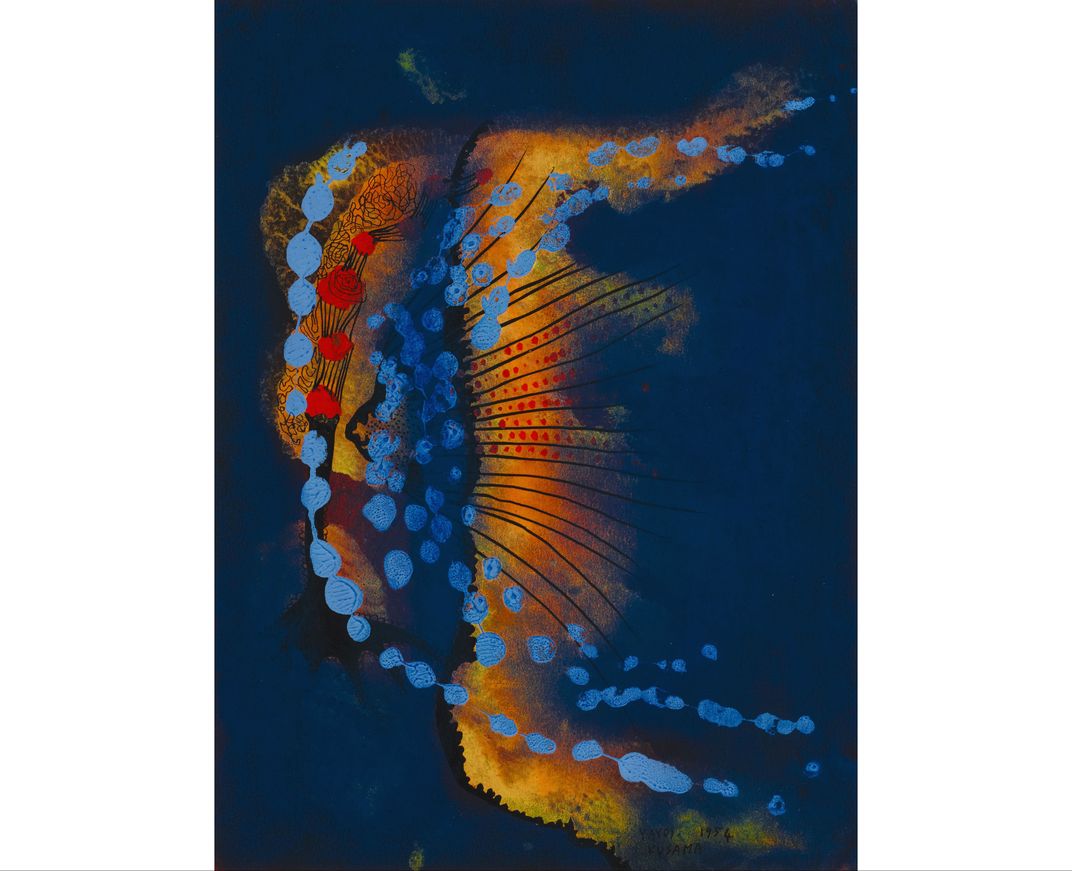
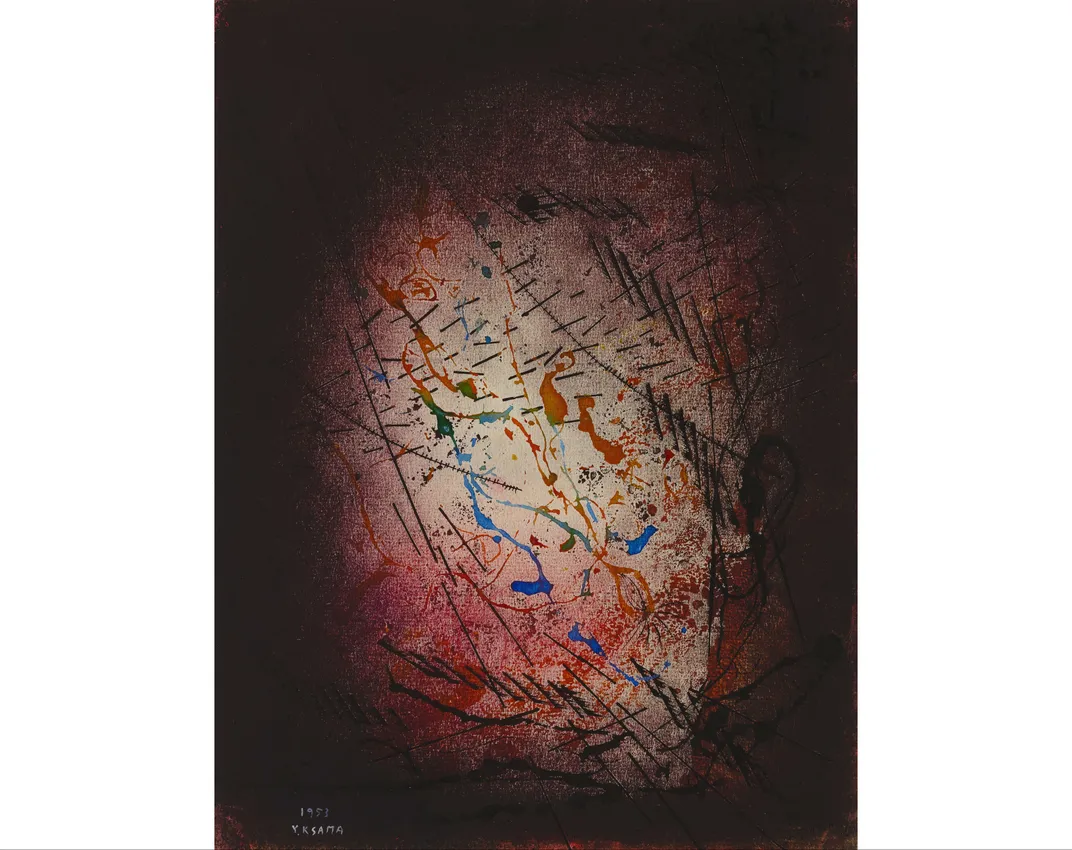
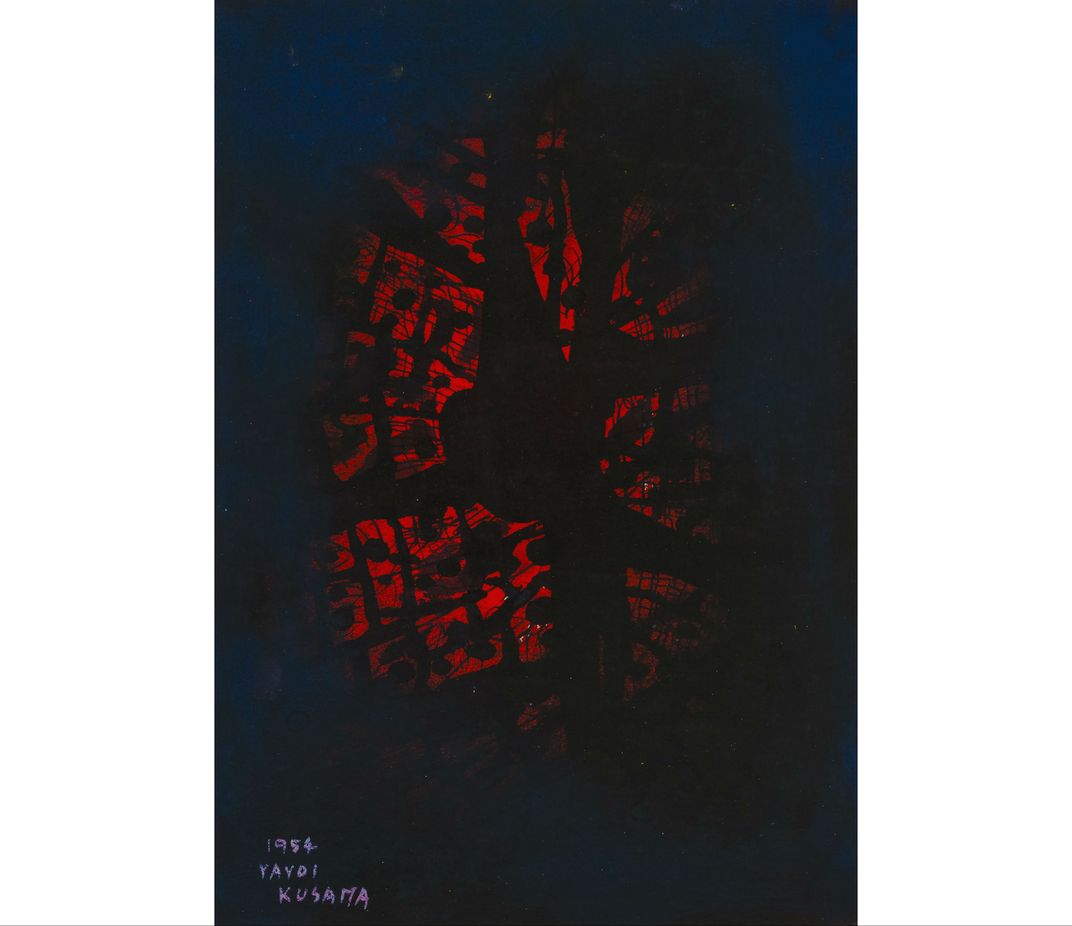
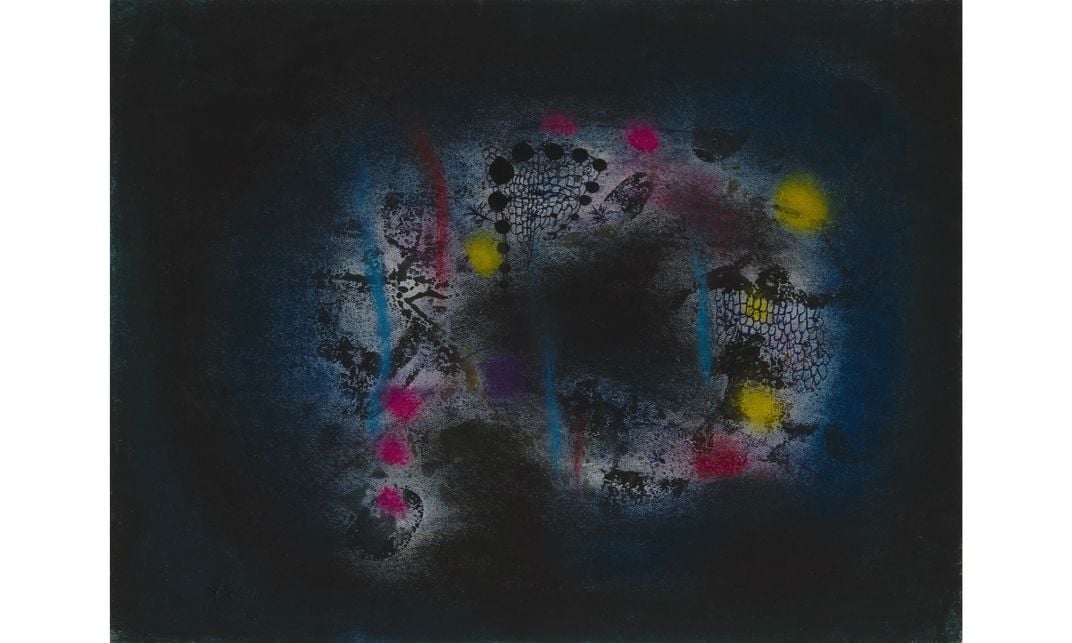
/https://tf-cmsv2-smithsonianmag-media.s3.amazonaws.com/accounts/headshot/Image_from_iOS.jpg)